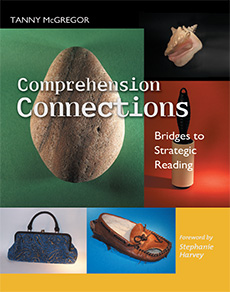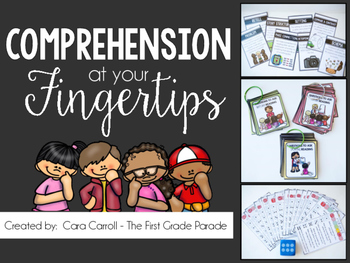How's reading coming along this school year? By now I'm sure you're in full swing with guided reading. I recently went to both Indiana and Tennessee for the SDE Kinergarten and 1st grade conferences. I had the opportunity to talk a lot about guided reading (a hot topic!!) and reading comprehension in several of my sessions.
If you're looking for some great guided reading phonics activities for teacher table, check out this resource full of tried and true activities I used in the classroom and read about how I used them HERE.
If you already have this resource, be on the lookout for Volume 2!!! I'll be posting another set of guided reading phonics activities this weekend.
Today I wanted to touch on comprehension while I'm thinking about it. Sometimes I feel like we're so concerned with moving our kids to the next level that we don't really pay close attention to the skills our kids need to become independent readers who can truly comprehend what they're reading. I feel like this is the most important part of reading! Understanding what we read. How do you fit that into your instruction?
First I think it's important to break down the skills and strategies our kids need to learn and practice.
This book was recommended to me this past summer by several readers and after purchasing it I realized it was a book I had already owned and read, LOL! I guess I never paid attention to the cover or the author because I barrelled through the book like it was nobody's business. Tanny McGregor is a genius when it comes to teaching kids how to apply comprehension strategies to their reading. I implemented so many of her ideas into my instruction when I was in the classroom. I HIGHLY recommend it!
So what exactly did some of these activities entail?! Well...that's a whole other post, lol!! But if you really want to know, just grab the book!!!
As far as comprehension skills were concerned, it was really important for me to have easy access to resources and questioning prompts so that I would be able to target various skills any time we read a book...shared reading, guided reading, etc. I needed to be able to have things right at my fingertips.
I finally had the chance to give those resources a makeover and now I can share them with you!
I liked to keep a set of mini comprehension posters with me at all times. I actually printed out two different sets. One to display on my focus wall (as new skills/strategies were introduced) and then I kept one on a binder ring and placed it on a command hook next to my easel so that I'd have quick access to it...and so would my kids. They knew they could use that resource whenever they had questions, etc.
I also kept 3 sets of questioning cards/prompts readily available...questions to ask before/after/during reading. These were probably my most used resource in the classroom. I kept them in my guided reading toolkit and carried that toolkit to my carpet every time I did a read aloud with the kids. I've since added a lot of new questions to all three rings, but these were great for getting kids to think about the text in a variety of different ways. They also include a lot of higher order thinking questions. That was something that was really important to me. I wanted to be able to differentiate questioning on-the-fly and these provided me with a way to do that effectively and kept me from asking the same questions over and over again.

My little comprehension dice cards were also a favorite for both myself and my kids! Any activity with dice is always a favorite, right?! I created a lot of different comprehension cards to target different skills and strategies and depending on what we were targeting in our instruction would determine which cards we would use. They were great to use with our guided readers, but we also used them with our shared reading books to change things up a bit from the questioning rings and prompts. Gotta keep 'em guessing ;)
ANY time is a good time to work on comprehension strategies and skills and it's definitely not a part of reading we want to neglect or ignore. If you want to grab a set of these comprehension resources for your classroom, you can find them here:
How do you target comprehension in your classroom?







No comments:
Post a Comment